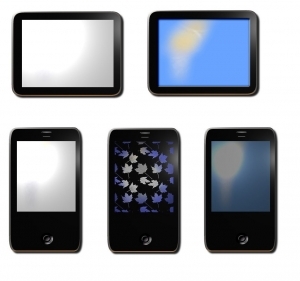Some Features of iBooks to Make Your E-Reading Experience Easier

One of the most popular apps available to users of Apple’s iPhones and iPads is iBooks. This simple app allows you to read almost any book anywhere by simply downloading it from the iBookstore or from your computer. As such, it presents a great alternative to popular e-readers, such as Amazon’s Kindle, and allows you to keep your reading, phone calls, text messaging, and more all on one mobile device. While the basics of iBooks, such as downloading books and browsing through them, are intuitive and easy to master, there are many features to iBooks that many users fail to take advantage of. Below you will find out how to use these often overlooked features in order to make your iBooks experience all the more enjoyable.
One of the most common criticisms of iBooks is that it is much more of a strain on a person’s eyes to read books on an iPhone or iPad device than it is on a Kindle. While this criticism is certainly true in iBooks default settings, a number of setting controls exist in iBooks to help mitigate the strain while reading. These settings can be accessed by clicking the ‘AA’ icon (a small A followed by a larger A) on the top of your screen whenever you open a book in iBooks. Clicking this icon will open a menu with a number of options.
The first item you will see in this menu is a slider. This slider controls the brightness of your screen. Move it to the left to darken the screen, if the screen is too bright for you, or to the right to brighten the screen, if you are finding it difficult to read the words clearly.
Next, you will see two buttons side by side, one with a small capital A, the other with a large capital A. These buttons control the size of the text in your books. Click on the small A to make the text smaller, or the large A to make it bigger.
The next button, labelled ‘Fonts,’ is fairly self-explanatory. Clicking this button allows you to change the font of the book you are reading.
Finally, the last button, labelled ‘Themes,’ allows you to change the background color of the book you are reading to either (default) white, sepia, or black. This option is particularly useful as the white background can be quite straining on your eyes after you have been reading for a long time. The second option in ‘Themes’ allows you to change between ‘Book’ and ‘Scroll’ display. In ‘Book’ display, you ‘turn’ the pages as you would in a real book, whereas in ‘Scroll’ you scroll down through the book as though it were a webpage.
Furthermore, navigating through your iBooks is simple and you have a number of options available to you. To access the navigation features, click on the icon with three horizontal bars at the top of your screen when you open a book. This icon will open up your navigation window, which is divided into ‘Contents,’ ‘Bookmarks,’ and ‘Notes.’ ‘Contents’ is your table of contents and clicking on a chapter in it will take you straight to that chapter in the book. ‘Bookmarks’ lists the bookmarks you have placed in your book. To create a bookmark, simply press the banner icon at the top-right corner of your screen while reading. Click the bookmark again to remove it from your bookmarks list. Finally, ‘Notes’ keeps track of all text you have highlighted and written notes about in your book. To highlight a word, click and hold on the word. The word will be highlighted yellow and by clicking the word again you can add a note to it. This note taking feature is particularly useful if you are using iBooks for study.
While iBooks may be one of the more basic apps on offer to iPhone and iPad users, it still offers plenty of useful features. By becoming familiar with these features, you will be able to fully enjoy using your iBooks to read your favorite books whenever and wherever you want.
